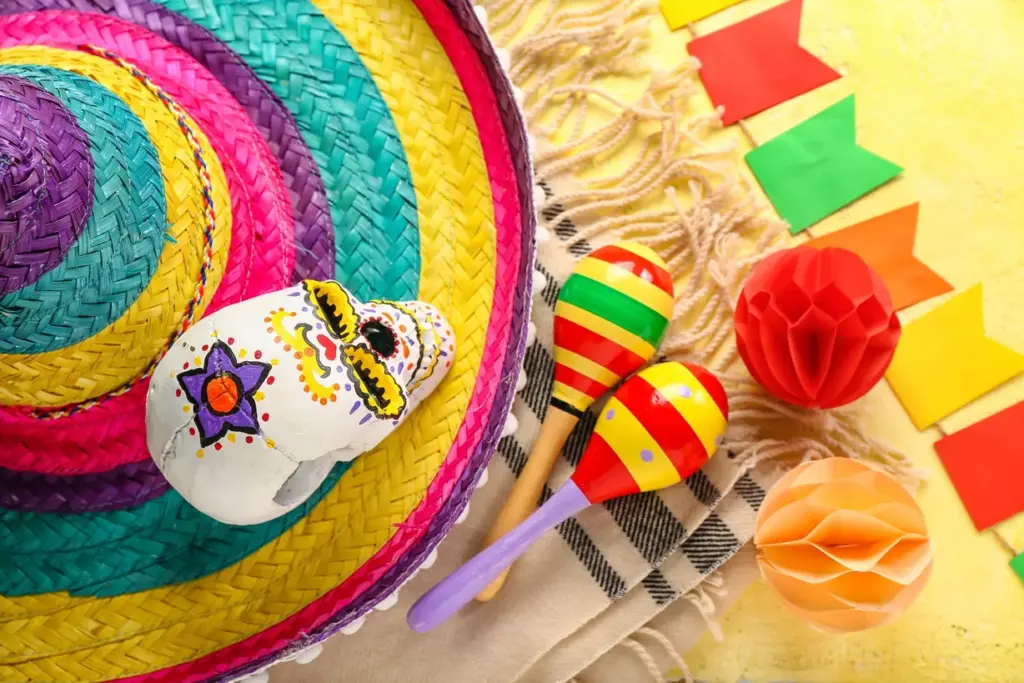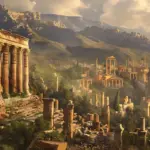1. Day of the Dead (Día de los Muertos)
The Day of the Dead is perhaps the most famous Mexican festival. Celebrated from October 31 to November 2, this colorful event honors deceased loved ones. Families build altars, known as ‘ofrendas,’ and decorate them with marigolds, candles, food, and photographs. The celebration combines indigenous traditions with Christian elements.
The heart of the action takes place at the Zócalo, where massive parades, art installations, and cultural performances attract thousands of visitors. Everywhere, you’ll find uniquely decorated sugar skulls and pan de muerto, a traditional sweet bread.
Visitors can partake in cemetery visits where families gather to remember their loved ones, ensuring the spirits feel welcomed and remembered. Face painting and traditional music, such as mariachi, add to the festive atmosphere.
2. The Independence Day (Día de la Independencia)
Independence Day, celebrated on September 16, marks the beginning of Mexico’s fight for independence from Spanish rule. The festivities kick off the night before with ‘El Grito de Dolores,’ a historical reenactment of the call for independence made by Miguel Hidalgo. The President of Mexico leads this reenactment from the National Palace, inspiring the gathered crowds.
The Zócalo becomes a sea of red, white, and green, the colors of the Mexican flag. Fireworks, patriotic songs, and traditional dances fill the city’s main square. Street vendors sell an array of food, from tacos to churros, allowing visitors to indulge in authentic Mexican cuisine.
Parades brimming with traditional costumes and music fill the streets on Independence Day. It’s a time of national pride and a wonderful opportunity to immerse yourself in Mexican culture and history.
3. Holy Week (Semana Santa)
Holy Week, observed from Palm Sunday to Easter Sunday, is a deeply religious event across Mexico. Mexico City’s processions and parades are particularly spectacular, blending profound religious significance with vibrant cultural expressions.
One of the highlights is the Passion Play, a dramatic reenactment of Jesus Christ’s crucifixion and resurrection. Thousands of actors and spectators participate, creating an unforgettable experience. This performance takes place in several neighborhoods, including Iztapalapa, renowned for its elaborate portrayal.
Churches across the city hold special services, and streets are adorned with religious icons and beautifully crafted floats. Visitors can also enjoy traditional foods like ‘capirotada,’ a sweet bread pudding, which is often prepared during Lent.
4. Feast of Our Lady of Guadalupe (Día de la Virgen de Guadalupe)
On December 12, Mexico City celebrates the Feast of Our Lady of Guadalupe, the patron saint of Mexico. The Basilica of Our Lady of Guadalupe becomes the focal point for millions of pilgrims who travel from all over the country to pay their respects.
The festival includes traditional dances, fireworks, and vibrant performances. Many pilgrims walk miles to the basilica, some even on their knees, to show their devotion. The basilica itself is magnificent, one of the most visited religious sites in the world.
For tourists, the event offers a glimpse into the deep faith and cultural identity of the Mexican people. The celebration extends beyond the basilica, with street fairs, markets, and countless food stalls providing a festive atmosphere throughout the city.
5. Guelaguetza Festival
The Guelaguetza Festival, though originating in Oaxaca, has found a vibrant place in Mexico City. Celebrated in late July, this festival showcases the indigenous culture and traditions of various regions in Mexico. Performers dressed in colorful traditional garments dance and offer gifts as a symbol of communal sharing.
The event features folk music performances, traditional dances like the ‘Danza de la Pluma,’ and a wide variety of indigenous crafts and foods. The festival aims to promote cultural exchange and preserve indigenous heritage.
Held at the National Auditorium and other locations throughout the city, the Guelaguetza is a lively and enriching experience. Visitors can also explore art exhibitions and workshops held in conjunction with the festival.
6. Festival de México
The Festival de México, generally held in March, is one of the most prominent cultural events in the country. This multi-disciplinary festival features music, dance, theater, visual arts, and literature, with numerous performances and exhibitions held in some of the city’s most iconic venues.
From contemporary art installations to traditional Mexican folk music, the festival caters to diverse tastes and interests. Venues like the Palacio de Bellas Artes and multiple outdoor spaces become platforms for both local and international artists to showcase their work.
For tourists, this festival offers a comprehensive cultural experience without leaving the city. It’s an excellent opportunity to witness the creative excellence that defines modern Mexican culture.
7. Mexico City Pride Parade (Marcha del Orgullo LGBT)
Held in June, the Mexico City Pride Parade is one of the largest Pride events in Latin America. It celebrates the LGBTQ+ community and promotes equality and tolerance. Starting at the iconic Angel of Independence monument, the parade makes its way down Paseo de la Reforma, ending at the historic Zócalo.
The streets are filled with rainbow flags, colorful costumes, and an electrifying atmosphere. Thousands of participants and spectators fill the streets, making it a joyous and inclusive event. Besides the parade, various cultural activities, concerts, and panel discussions take place throughout the Pride month.
Visitors will find that Mexico City is a welcoming place with a vibrant LGBTQ+ scene. The parade is a testament to the city’s progressive spirit and commitment to human rights and equality.
8. Mexico City International Film Festival (FICMEX)
The Mexico City International Film Festival, typically held in October, is a prestigious event that draws filmmakers, critics, and movie enthusiasts from around the globe. The festival features a wide range of films, including national and international premieres, documentaries, and retrospectives.
Screenings are held at some of the city’s most renowned theaters, such as the Cineteca Nacional and the Cine Tonalá. The festival also includes workshops, panel discussions, and Q&A sessions with filmmakers, offering a deep dive into the art of cinema.
Film lovers visiting Mexico City during the festival will be treated to a rich program that celebrates cinematic artistry. It provides a unique cultural experience and a chance to engage with filmmakers and fellow cinephiles.
9. Mexico City Marathon (Maratón de la Ciudad de México)
Every August, Mexico City hosts its annual marathon, a thrilling event for both runners and spectators. The marathon route takes participants through some of the city’s most iconic landmarks, including Chapultepec Park, Paseo de la Reforma, and the Zócalo.
The event attracts thousands of runners from around the world, making it a truly international affair. The city’s high altitude and scenic routes provide a challenging and rewarding experience for participants.
For visitors, the marathon is an exciting spectacle. Cheering on runners along the route offers a unique way to experience the city’s energy and community spirit. Various festivities and activities are organized in conjunction with the marathon, making it a festive occasion.



